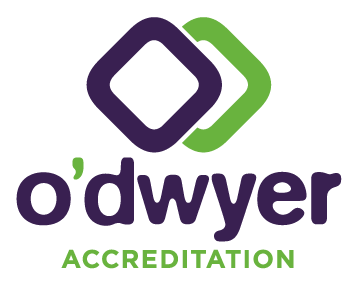
Are you secretly dreading the return of NATA for your annual assessment? Worrying that it’ll be every bit as stressful as last time and create a huge distraction from day-to-day work?
We get it. Because we’ve been there too.
Without a doubt, the best approach is to be on the front foot. It’s no mystery that a successful NATA assessment relies on preparation, consistency, and really owning your quality system.
So, what specific things can your lab do to prepare for a hassle-free NATA assessment and be sure you effectively cover all NATA requirements?
Read on for our secret formula!
1. Fundamentals: make sure your lab is performing at its best
The elements NATA always asks about before your assessment are staff changes, proficiency programs, equipment, calibration, methods, and the laboratory environment.
Why?
Because these are the fundamentals for a successful laboratory.
Without them, your team simply cannot produce reliable test results. And no amount of organising, writing documents, or reading the NATA requirements will change that.
So, when preparing your lab for NATA assessment or reassessment, first ask about these fundamental elements.
If you discover significant gaps, don’t keep it to yourself. Share the information with management, develop a plan to correct the issue, and discuss your plans with NATA if necessary.
2. Maintain Systems: always follow all your lab accreditation
systems
Once they achieve NATA accreditation, some labs never get around to their audits, document control, equipment register, training records, and other routine tasks between NATA assessments.
It’s no surprise, really. Without the motivation of a looming NATA assessment, these tasks just don’t get done.
Naturally, the consequence of not maintaining systems for laboratory accreditation is sheer panic in the weeks leading up to the assessment! So, if your lab can keep up with routine tasks, there will be very little extra preparation you need to do for a NATA assessment.
To make it even easier, try to design systems that create records concurrently with doing the work. E.g., if a training record is well structured and relevant, the lab manager will want to use it to step through the training program.
3. Internal Audits: schedule audits and complete all corrective
actions
Make sure you keep up with internal audits. And always follow up on the findings.
Sounds simple, right?
Yet many labs struggle with internal audits because of staff resources, operating in a lab that’s too small, or simply because they’ve scheduled too many audits.
Here’s a minimum viable audit program you can adopt to manage risk and reliably meet NATA requirements.
If your lab can do more than the minimum audits, use the audit program to drive improvements and build a “no-blame” quality culture in your organisation.
4. Non-Conformances: revisit issues to avoid the same mistakes
If you uncover significant non-conformances, follow them up with an internal audit to verify the corrective action was effective.
Following up on non-conformances for any issues raised during your previous NATA assessment is even more important. Because if NATA believes that you’ve failed to address the problems from the past, you’ll find them taking a more negative approach with your future assessments.
You need to show them that you can fix problems.
When deciding on corrective actions, the common traps we see people fall into are:
- Closing out non-conformances too soon
- Jumping to conclusions about causes
- Failing to address the causes
5. Management Review: schedule it regularly to gain the most
value
Trust us; you don’t want to be doing a management review right before your NATA assessment.
If you do, you’ll likely just be going through the motions, repeating what you did for last year’s management review, perhaps with a few updates.
You’ll never have the time to improve and make it meaningful for you.
Schedule a management review at the same time each year (or more frequently), regardless of when your NATA assessment is due. Also, set up standard reports and record the instructions for producing the data so it’s comparable.
When you’re not looking down the barrel of an assessment or certification audit, going through a management review will be a much more valuable exercise!
6. Planning: what to do when NATA gets in touch
Don’t worry too much about the NATA paperwork – the paperwork is not the assessment!
The section to spend time on is where you specify changes to the scope of accreditation. Make sure you’ve got this right and that your laboratory management agrees to it.
You can simply copy from your last Assessment Information Document and update most other sections.
NATA assessor options
Remember that when NATA proposes technical assessors, you can object to any with an apparent conflict of interest.
Although that may feel confrontational, it’s for the best. The last thing you or NATA want is you wondering if there’s an ulterior motive behind any assessment findings. So, if you think there’s a conflict of interest or if you’ve had a problematic assessment in the past, it’s okay to ask NATA if they can assign a different assessor.
You can also request to avoid having a particular NATA staff member.
Again, this isn’t something to do lightly, but we’re all human. And if you’ve had a traumatic assessment in the past or you’re tired of arguing with a particular NATA staff member, your staff will be more relaxed when they see a different auditor walking through the door.
Assessment date and staffing
Negotiate an assessment date when you’ll have enough staff available.
You don’t want a NATA assessment when only one senior staff member is present. The minimum size of a NATA assessment team is two people, so ensure there are at least two people in every section who can answer their questions.
The Assessment Plan gives you a good idea of what the assessment team will cover during the assessment. NATA will list specific tests they want to see but don’t get too concerned about the timing. Most NATA staff will fit in with your lab priorities for the day.
7. NATA Assessment: what to do during the assessment
Ensure senior staff are available to support any junior team members in answering questions for NATA. If someone is sick or you only have one senior staff member, ask NATA to wait.
Another helpful arrangement is to organise lunch and encourage everyone to stop for it.
Believe it or not, socialising with the assessors is an integral part of the accreditation process. And it’s an excellent opportunity to give and receive more general context around accreditation and your laboratory.
Make the most of the exit discussion
The exit discussion is your chance to clear up any misunderstandings with the NATA staff member and technical assessor present.
Once misconceptions find their way into the assessment report, others will read and believe those findings – including future NATA assessors, lead auditors, and NATA managers. Yes, it’s the end of a long, hard day, and you just want to seem cooperative. But it does matter when incorrect findings are written in the assessment report.
So make the effort to question and ask for specific examples.
8. Follow-Up: what to do after the NATA assessment
The biggest trap we see people falling into is responding to what they remember from the assessment.
Instead, when you get the assessment report, try treat it as entirely new information. Some of the findings may differ from what you recall discussing during the assessment. Plus, you’ll save time on NATA requirements and avoid receiving frustrated correspondence from NATA!
Read the findings, check what clauses are referenced, and look at the specific example(s) NATA gives you. Then write your investigation notes.
If you find some non-conformances challenging to understand or just plain wrong, don’t waste too much time figuring it out. Just call NATA and ask for more information.
Finally, once you’ve sent your replies and NATA has ticked off on them, go back and check each of your corrective actions.
Would the proposed corrective action have prevented the original non-conformance from happening?
If not, you have a little more work to do!
Investigate again and keep going until you find the root cause.
Want a little more help?
If your NATA assessment is coming up and the idea of getting organised in time is losing you sleep, we can help.
Our combined experience with NATA requirements and routine assessments will mean your next NATA assessment is a walk in the park. Get in touch today.


